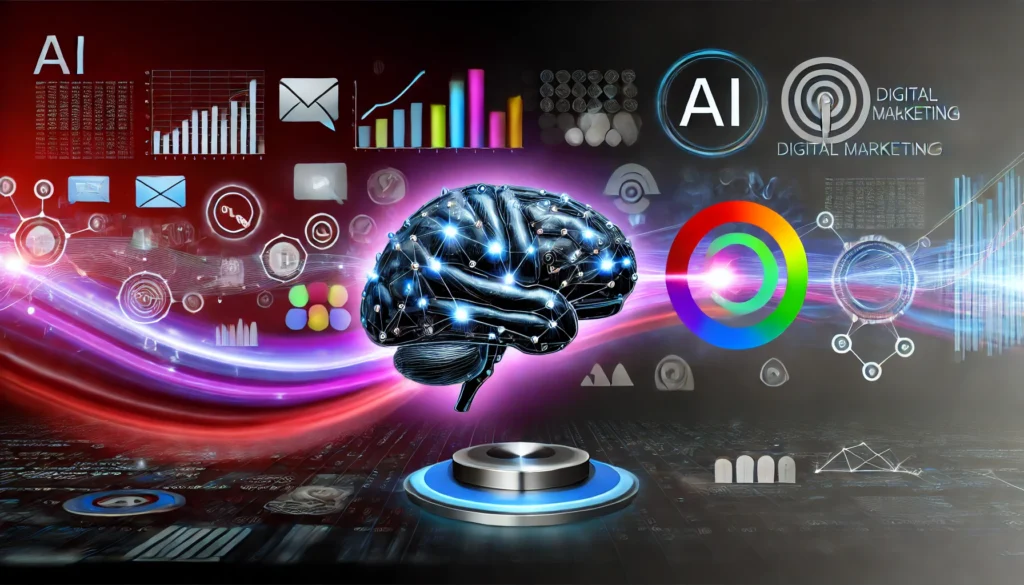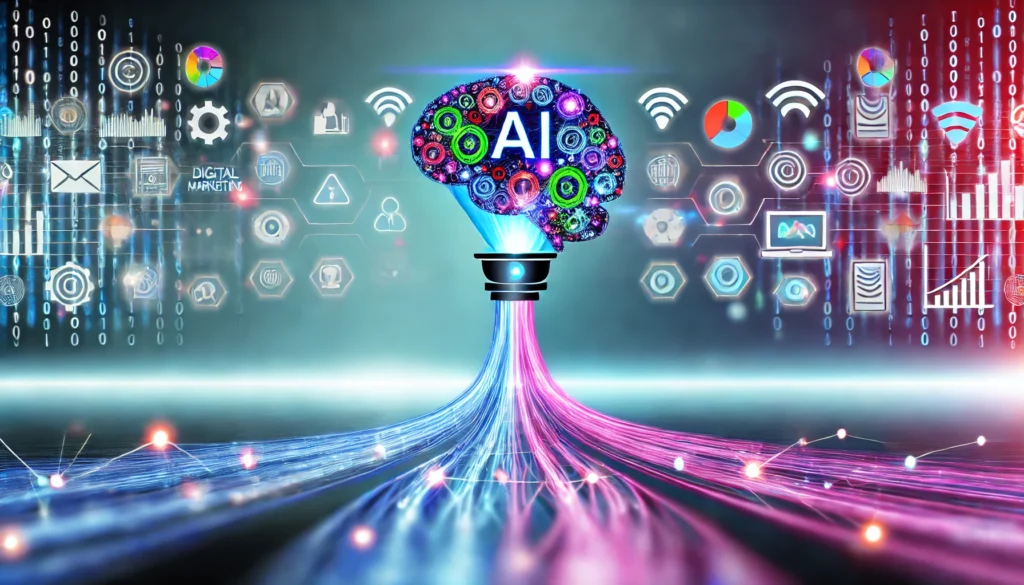Over the past 10 years, the advertising industry has undergone significant transformations. With advancements in technology, shifts in consumer behavior, and the rise of data-driven advertising, the landscape of how businesses promote their products and services has changed dramatically. One of the most impactful developments during this period has been the introduction of artificial intelligence (AI). AI has reshaped everything from how brands engage with audiences to the very core of advertising strategies. In this article, we’ll explore how the advertising industry has evolved over the last decade and how AI in advertising is shaping the future.
The Shift from Traditional to Digital Advertising
A decade ago, traditional advertising—print, radio, and television—still dominated the marketing landscape. However, as digital advertising gained momentum, it became clear that businesses needed to pivot. The rise of social media platforms, the widespread use of mobile devices, and the ever-increasing access to the internet shifted the industry toward a digital-first approach. Platforms like Google Ads, Facebook, and Instagram emerged as central players, allowing advertisers to reach their target audience with unprecedented precision.
The introduction of programmatic advertising revolutionized the industry. Programmatic buying uses advanced algorithms to automate the purchase of ad space in real-time, making it easier for brands to reach specific audiences. This method relies on user data, allowing for more personalized and relevant advertisements, which ultimately improves ROI. Businesses that adapted to this data-driven approach were able to maximize their advertising spend more efficiently.
Social Media and the Rise of Influencer Marketing
Over the past 10 years, social media advertising has become one of the most powerful tools in the digital marketing arsenal. Platforms like Facebook, Instagram, Twitter, and now TikTok allow brands to engage with their audience directly, providing a space for real-time feedback and interaction. The ability to connect on a personal level has fundamentally changed how brands approach advertising.
One major development in this space is the rise of influencer marketing. Instead of traditional celebrity endorsements, brands now collaborate with social media influencers—people with loyal followings and high engagement on their platforms. These influencers often act as trusted voices, making product recommendations that feel genuine to their followers. This more organic style of advertising has proven effective, especially with younger audiences who prefer authenticity over traditional ad messaging.

Personalization and Data-Driven Strategies in Advertising
One of the most significant shifts in the advertising industry over the past decade has been the focus on personalization. Consumers today expect ads that speak directly to them, not just generic content aimed at a broad audience. Thanks to advances in big data and AI, advertisers can now create campaigns that are more personalized and relevant than ever before.
Data-driven advertising allows brands to analyze vast amounts of consumer data to deliver targeted content. This can include demographics, online behavior, purchase history, and even real-time interactions. For example, retargeting adsfollow users who have shown interest in a product but didn’t complete a purchase, reminding them of the item and encouraging conversion. These tailored experiences not only increase engagement but also drive better results for businesses.
How AI is Transforming the Advertising Industry
Artificial intelligence has become a cornerstone of modern advertising. AI-powered tools are helping brands enhance everything from ad targeting and campaign optimization to the creative process. The ability to process large volumes of data and deliver insights in real-time makes AI an essential asset in the digital advertising ecosystem.
AI and Advanced Audience Targeting
AI has transformed how brands target their audiences. Machine learning algorithms analyze user behavior, predicting which types of ads will resonate with specific segments. This ensures that brands can create more personalized experiences for their audiences, leading to higher engagement and conversions. AI can identify subtle patterns in user behavior that humans may overlook, making the targeting process more precise.
Dynamic Personalization and Ad Creatives
With AI, dynamic personalization has reached new heights. AI can automatically generate different ad creatives based on user data, such as location, search history, or even past interactions with a brand. This level of personalization means that ads feel more relevant to the user, which often leads to better engagement and higher conversion rates.

Programmatic Advertising and AI Automation
Programmatic advertising has advanced rapidly with AI technology. These AI-driven systems can automate the buying and placing of ads, optimizing them in real-time. This means that brands can run more efficient campaigns with less manual input, relying on the AI to adjust bids and placements for the best performance. The combination of programmatic and AI not only saves time but also improves ROI by ensuring that ad spend is allocated effectively.
AI in Customer Engagement: Chatbots and Automation
One of the most exciting developments in AI advertising has been the rise of chatbots. These AI-powered tools allow brands to interact with customers in real-time, providing immediate responses and guiding them through the sales process. Chatbots can answer common questions, recommend products, and even close sales. Their ability to provide a seamless user experience makes them a powerful tool for improving customer satisfaction and driving conversions.
Predictive Analytics and ROI Optimization
AI’s ability to process data extends beyond real-time interactions. Predictive analytics allows advertisers to forecast campaign performance and optimize budgets for maximum impact. By analyzing historical data, AI can identify trends and predict future outcomes, enabling brands to make more informed decisions. This not only ensures better advertising performance but also maximizes ROI by allowing advertisers to focus resources where they’ll have the most impact.
Challenges and Ethical Considerations of AI in Advertising
While AI offers incredible potential, it’s important to address some of the challenges and ethical considerations it brings to the advertising industry. The most significant concern is around data privacy. As AI relies on consumer data to function, businesses must ensure they comply with data protection regulations like GDPR and CCPA.
Another challenge is balancing AI’s automation with the need for human creativity. While AI can optimize many aspects of advertising, it’s crucial not to lose sight of the emotional connection that creative storytelling brings to an ad campaign. Brands that successfully integrate AI with creative strategies will have the edge in crafting meaningful and impactful campaigns.
The Future of Advertising with AI
Looking ahead, it’s clear that AI will continue to shape the future of advertising. As machine learning algorithms become more advanced, we can expect even more personalized and engaging experiences for consumers. Brands that adopt these technologies and leverage AI-powered advertising tools will be well-positioned to lead the market in the coming years.
For businesses, staying ahead of these trends will be key to remaining competitive. Artificial intelligence is no longer just an add-on to a marketing strategy; it’s an essential component that can drive growth and success.
The advertising industry has experienced a massive transformation over the last decade, with AI in advertising emerging as a pivotal force. From improving audience targeting and creating personalized experiences to automating processes and optimizing ROI, AI is driving innovation and changing how businesses connect with their audiences. As we move forward, those who embrace the power of AI will be best equipped to thrive in this rapidly evolving landscape.





